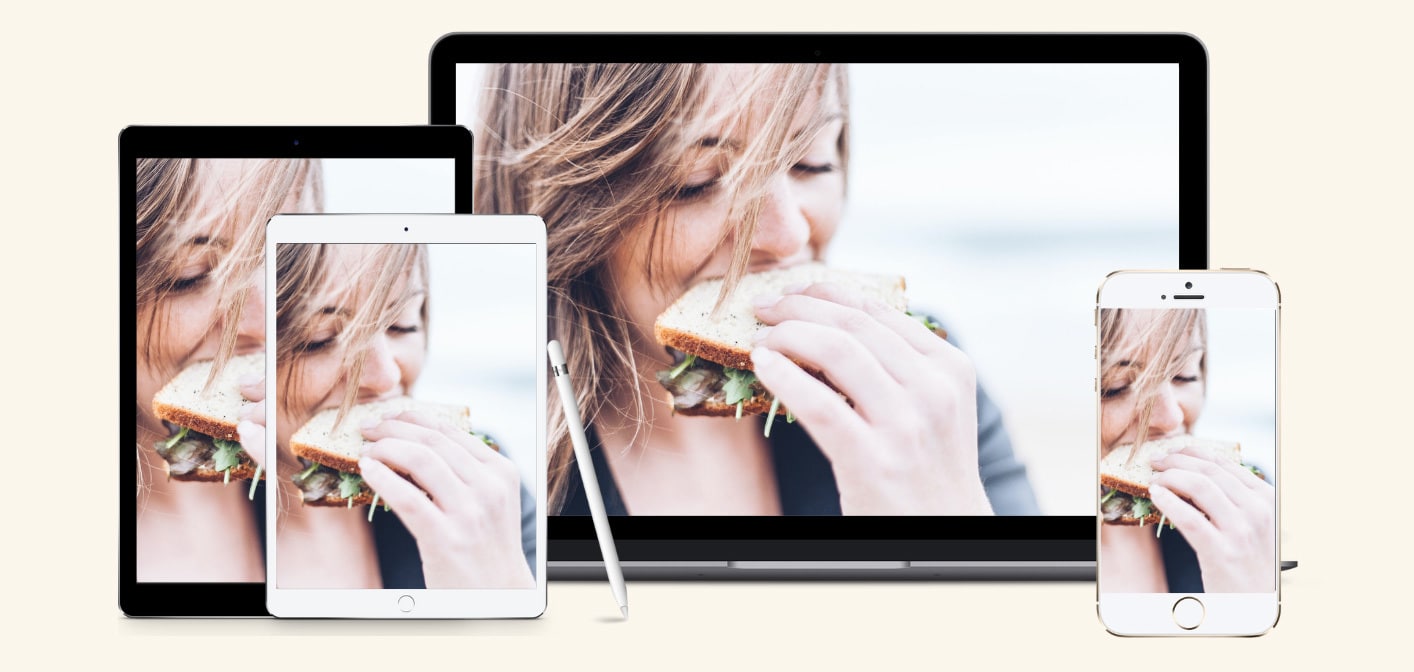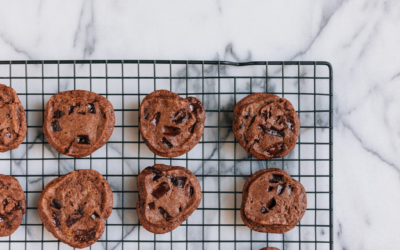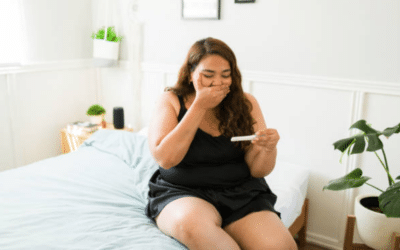I’m often asked by clients how to start Intuitive Eating. Learning how to eat intuitively after months or years of dieting and weight-loss attempts is usually a process. A wonderful, liberating, best-thing-you’ll-ever-do-in-your-life, but a sometimes tricky process. Whilst it isn’t as simple as following a prescriptive meal plan or diet, there are some clear steps you can take to get started.
Why get started with Intuitive Eating?
Eating is an evidence-based approach to health and wellness. It helps you tune into your body signals, stop the binge-restrict cycle, and heal your relationship with food. In the process of intuitive eating, you let go of the misconception that certain foods are good or bad, and over time you are able to eat what you want without feeling guilty. It is steered by internal body signals and wisdom (i.e. hunger, fullness and satisfaction) rather than external rules.
This may sound simple, but after years of diet talk and food rules, it is usually tricky to just, well, eat!
Here are five steps that you can follow that show you how to start Intuitive Eating.

Step 1: Allow yourself unconditional permission to eat ALL foods
A little scary, right? But also exciting!
This can be really hard to do when we live in a diet culture where food is given a moral value. That is, foods that are seen to be associated with thinness and “health” = good. And any other food = bad.
That’s where we:
- Start restricting and forbidding the “bad” foods … ultimately leading to feelings of deprivation.
- This leads to biological cravings for said forbidden food.
- Which leads to a bingeing episode, guilt and starting another diet to be “good”.
- And so, the cycle goes back to number 1.
Does this cycle sound familiar?
The only way to stop the cycle is to cut it off at the beginning. This means to allow yourself to eat ALL foods. No labels, no good or bad foods, because really, no food is morally good or bad. It’s all just-food.
Step 2: Stop trying to control your weight
Research shows us that up to 95% of people regain the weight lost whilst dieting within 2-5 years.
Why? Because of the setpoint weight. This is the weight that our body works very hard to maintain (usually within a range of 4-5kgs) to carry out all the necessary functions to keep us alive. When we’re not swinging between doughnut land (i.e. being bad), and diet land (i.e. being good), our weight settles at its natural set point. This weight range is already pre-determined, largely by genetics.
If we start messing with our set point weight through dieting, it starts to put a strain on our body and impact how well it can do its job.
In essence, diets make us work against ourselves and paradoxically, we end up achieving the exact opposite of what we wanted in the first place. Argh!
If you’re struggling with the idea of letting go of weight loss pursuits, this article might be helpful for you.
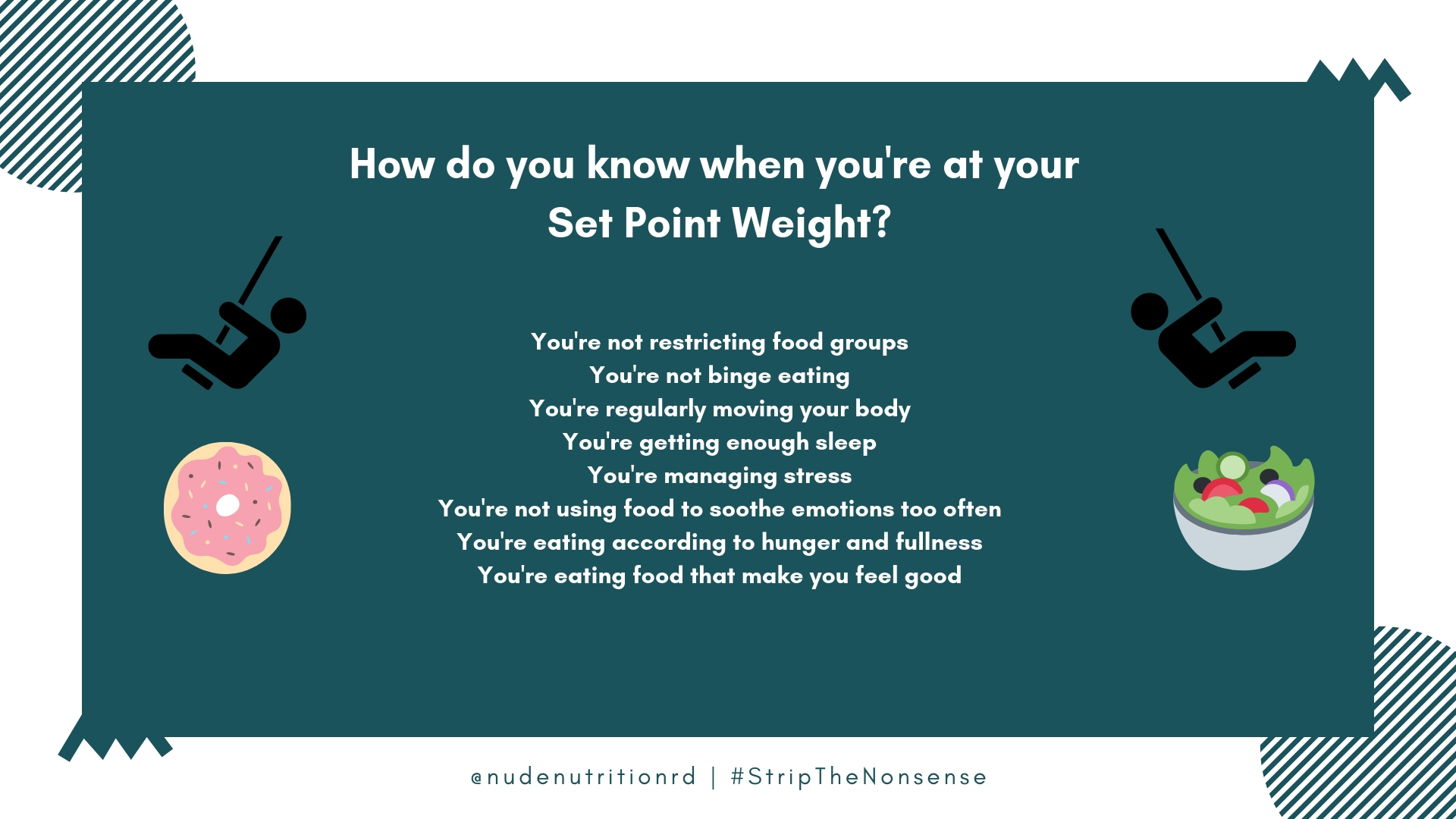
Step 3: Detox your social media feeds
There is a lot of rubbish nutrition advice out there in the world.
Also, our social media feeds are usually going to represent thin, white bodies more than all the other wonderful types of bodies that are out there.
Research tells us that we need to avoid or challenge this type of imagery because of the association between being exposed to unrealistic images and body dissatisfaction.
It’s time to get ruthless and unfollow anyone who:
- Promotes a balanced diet but say they need to “burn off the calories” after eating pizza
- Gives nutrition advice but does not have appropriate qualifications
- Uses terms like “eat clean” or eating “whole foods”
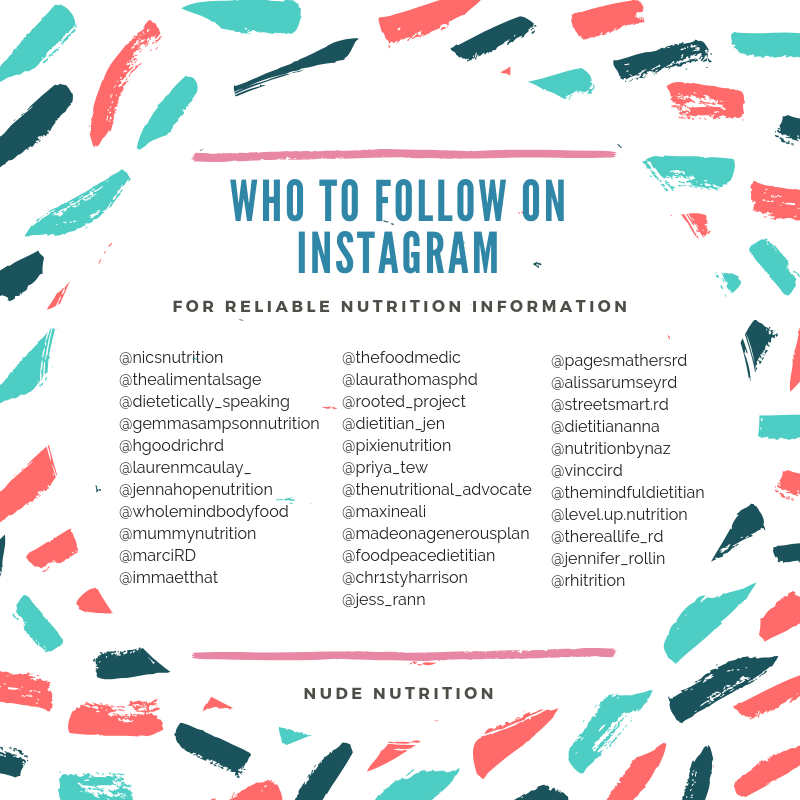
Step 4: Honour your biological hunger
It is extremely common after years of dieting and eating according to external rules to lose touch with what it feels like to be hungry or full. Don’t stress, these signals are still there and you can learn to hear them again. It will just take some time and a bit of trial and error. The best way to start tuning back in is to take a minute to pause before and after you eat to feel your hunger.
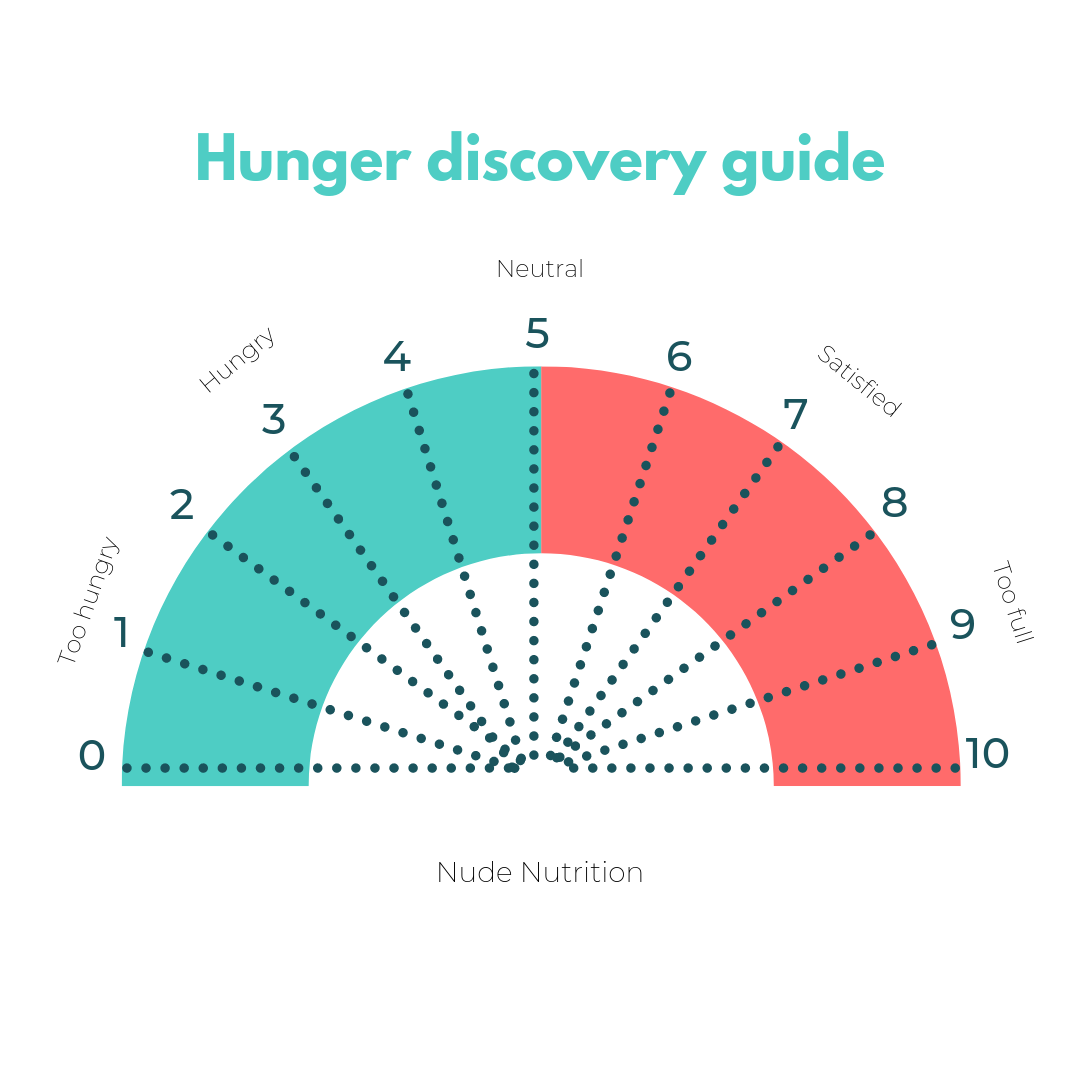 As a starting point, see if you can figure out what a 3, 4 or 5 level of hunger might feel like. You could feel one or a combination of the following:
As a starting point, see if you can figure out what a 3, 4 or 5 level of hunger might feel like. You could feel one or a combination of the following:
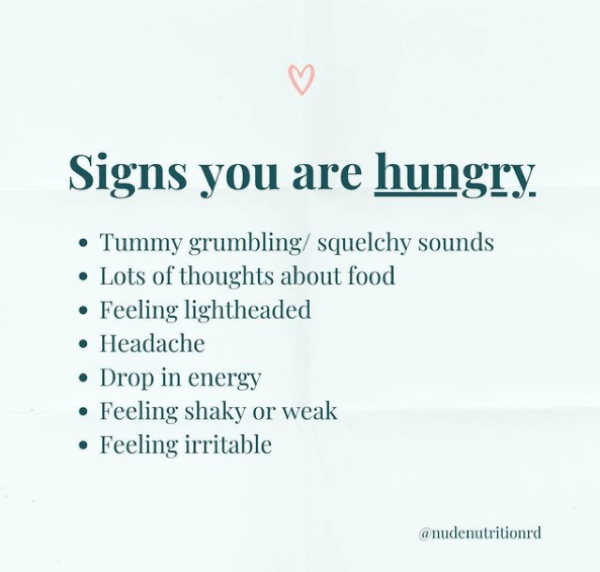
It usually feels good to start eating at a 3 or a 4, but explore for yourself, keeping a little diary using this free tool I’ve created.

Step 5: Find movement that makes you feel good
When learning how to start Intuitive Eating, it’s key to ditch the rigid exercise plans and start moving your body because of how great it feels!
Our bodies are designed to love to move. If exercising has never been joyful, it may be for a few reasons:
- It was often associated with dieting. And when the diet failed, so too did the exercise.
- You had bad experiences as a child being made to exercise when you didn’t want to; and/or
- You were always pushed by others to exercise and therefore have always rebelled those people.
Swap your mindset by focusing on how exercising makes you feel, rather than thinking about the calories that are being burned.
After exercise, how do you feel? – Energy levels? Confidence? Stress levels? Sleep? Most people find that these are all improved with regular movement.
It is well established that physical activity provides positive health benefits over the long term. It has impacts on metabolism, bone density, preserving lean muscle mass and mental health. It’s time to start viewing exercise as beneficial for improving quality of life, rather than as a weight loss tool.
Find something that you enjoy and start out slowly. This could be:
- going for a walk around the block while listening to your favourite podcast
- walking to a bus stop that’s one stop further away from your destination.
- dancing around the house
Summary:
Well that’s my top 5 strategies on how to start Intuitive Eating. It’s not about getting any of these things perfect, but instead chipping away so that barriers start to come down. Be kind to yourself and allow plenty of time to see how you can apply these steps each day. This is about making progress towards healing your relationship with food, not striving for a perfect diet (which by the way, doesn’t exist).
If you would like more information on how to stop binge eating, how to stop food obsession, how to stop emotional eating, and how to start intuitive eating, check out my free audio recording. It provides you with 7 actionable steps on how to start intuitive eating, with an actionable workbook.


